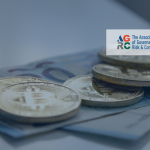€6.6 trillion of ESG-labelled assets are estimated to be under management in the EU . This is a colossal pile of capital that looks great in prospectuses but does not guarantee impact.
Matched against this, public scepticism is loud. Greta Thunberg has blasted offsets as a “greenwashing” risk that can let big polluters off the hook, and in-depth investigations have suggested many rainforest credits do not represent real emissions reductions at all.
The voluntary carbon market has even seen its value slump as doubts about bogus or over-counted credits mount. So there’s a question facing Brussels and the City of London: will the EU’s new push for transparency in ESG ratings and parallel its parallel in the UK move to regulate providers and turn marketing copy into measurable outcomes, or will it simply add another layer of tick-box bureaucracy? This article peels back the curtain with concrete examples and a sceptic’s curiosity.
Behind the Green Curtain
ESG ratings can sometimes look like astrology for investors. The same firm can be lauded as a leader by one provider and flagged as a laggard by another. Take Shell’s own reporting, which shows a Morgan Stanley Capital International (MSCI) ‘A’, a Sustainalytics risk score and an Institutional Shareholder Services (ISS) ESG C+ . These are all different ways of saying slightly different things about the same company.
Why the mismatch? Providers use divergent methodologies, weight disclosure over outcomes, and apply sector-specific metrics inconsistently. Therefore, a firm that publishes a lot of data can score well even if its real-world impact is modest.
But now regulators are pushing back. The EU has moved to regulate ESG-ratings providers, demanding clearer methodology disclosure, conflict-of-interest rules and European Securities and Markets Authority (ESMA) supervision to improve comparability. In the UK, HM Treasury and the Financial Conduct Authority (FCA) have signalled parallel action. The FCA is surveying providers and the government has set out draft measures, even though Westminster emphasises a City-friendly, proportionate approach.
If ratings are to stop being marketing shorthand and start signalling genuine risk and impact, that methodological fog needs clearing, fast.
Markets Built on Trust, Riddled with Risk
The voluntary carbon market has often resembled the Wild West, with high promise, poor fences and plenty of grifters. Investigations found large swathes of rainforest credits issued by major registries have dubious climate benefit, helping trigger a 2023–24 market rout. For buyers the fright is concrete. Many projects once counted as “avoided deforestation” have been shown to deliver little additional carbon benefit.
Fraud and double-selling are not hypothetical, either. US prosecutors charged former executives over cookstove projects accused of fabricating results, and Reuters has reported criminal elements exploiting Amazon projects tied to credits. These cases underline how weak oversight lets bad actors monetise nature.
Regulators are responding. The EU has green-lit a Carbon Removal Certification Framework (CRCF) to set common quality rules for removals, and UK authorities warn consumers about carbon-credit trading scams while probing mis-selling risks. Meanwhile the secondary market is maturing, with credits being packaged and traded like financial instruments, creating efficiency but also derivative-style risk. The tension: innovation versus instability.
The Political and Business Backlash
The pushback is noisy and increasingly political. In the US, a string of state laws and proposals have effectively curtailed ESG considerations in public investing, turning responsible-investment debates into partisan battlegrounds. In Europe, businesses grumble that new rules such as the Corporate Sustainability Due Diligence Directive(CSDDD) and the Corporate Sustainability Reporting Directive (CSRD) add hefty compliance bills and complexity, with German firms in particular warning about the burden of tracing suppliers across borders.
In London the question is whether the UK will shadow Brussels or take a looser, pro-competitiveness route. Treasury and regulators promise proportionate rules but firms fret over diverging obligations. Meanwhile tech promises another twist. Companies are deploying AI to automate ESG tracking, but regulators flag “black box” models and hallucinations as risks to accountability. The result is a combustible mix of regulation, politics and tech all colliding under the banner of sustainability.
Trading on Thin Air
Think of the market as a boxing ring: Brussels has climbed into the centre and is throwing heavy regulation jabs, while the City of London is circling, promising to fight smart rather than hard. The EU is pushing centralised oversight of ESG-ratings providers and carbon removals. ESMA and the Council have been working on detailed rules to force clearer methodologies, conflict-of-interest safeguards and stronger enforcement,
London’s response is deliberately different, with the UK proposing a pro-innovation, proportionate regime that places providers under FCA oversight but tries not to smother markets with red tape. Meanwhile the London Stock Exchange is building market infrastructure to lend credibility. A voluntary carbon market segment and related listings and trading solutions aim to bring transparency and liquidity to credits.
The flashpoint is arbitrage, If Brussels’ rules bite hard, firms may prefer London listings or seek regulatory arbitrage, but if London stays too lax, it risks losing credibility. Recent moves to link the EU and UK carbon markets complicate the calculus further, offering liquidity but raising questions about alignment and enforcement.
Beyond Box-Ticking
Regulation will only take us so far. The next leap is from paperwork to provable impact. Firms are already swapping annual Excel dumps for continuous verification. Satellite monitoring now tracks forest-carbon projects in near-real time, while pilots with registries are digitising measurement, reporting and verification (MRV).
Traceability is getting a tech upgrade too. Blockchain proofs and tamper-evident ledgers are being trialled to stop double-counting and trace a credit’s lifecycle from issuance to retirement. Think auditable provenance rather than paper trails.
On the corporate reporting side, start-ups such as Persefoni and Watershed offer near-real-time emissions dashboards and APIs that convert activity data into up-to-date footprints, making “double materiality” audits feasible rather than fanciful.
Finally, the EU’s Digital Product Passport promises lifecycle transparency for goods sold in Europe, forcing upstream emissions into the open and turning compliance into a marketable asset. Firms that embrace these tools stand to turn credibility into competitive advantage and make green claims you can actually trust.
Can Scrutiny Build Trust?
Pulling back the “green curtain” matters, because trust in ESG ratings and carbon markets will rise only as layers of opacity are removed and claims are matched to verifiable, measurable outcomes. European initiatives, from the EU Taxonomy to stricter disclosure rules, are important steps, but case studies and recent benchmark tests show regulation alone cannot guarantee integrity. It is essential that rigorous standards, independent verification and demonstrable emissions reductions follow. If markets can prove real climate impact rather than paper accounting, credibility will grow; if not, ESG scores and many carbon credits risk remaining little more than trading on thin air. Will Europe lead by making climate finance truly measurable, or will ambiguity persist?
And what about you…?
- How confident are you that the ESG ratings you rely on genuinely reflect a company’s environmental and social impact, rather than its marketing narrative?
- What steps could you take to improve transparency in your organisation’s ESG reporting or climate disclosures?







